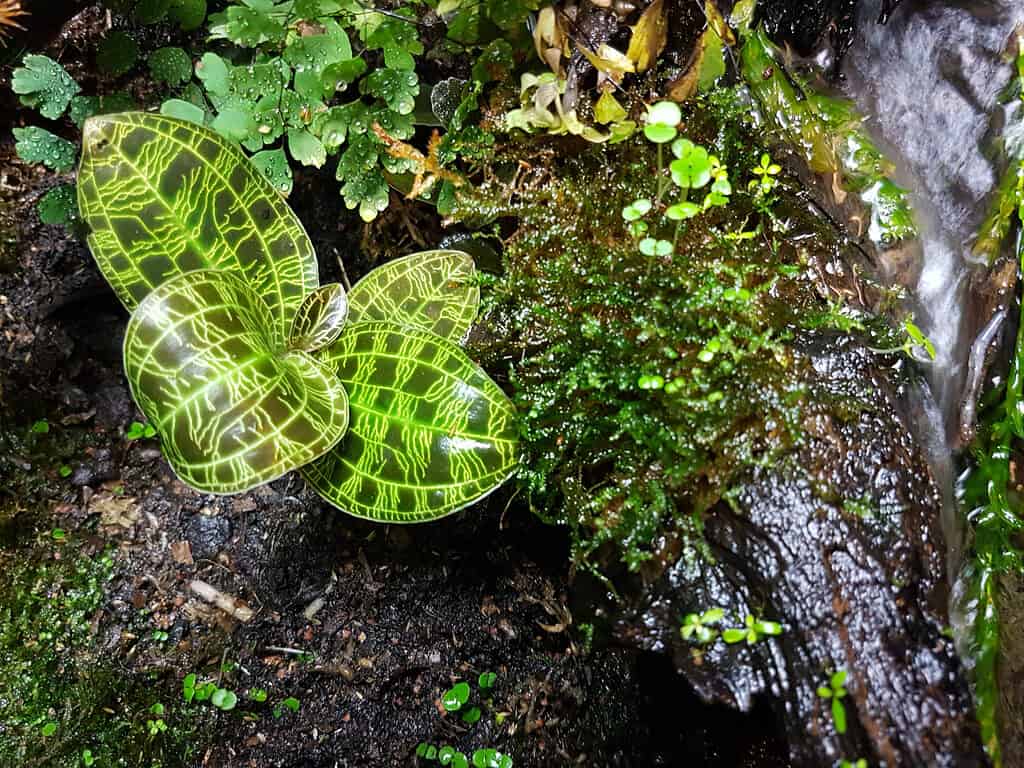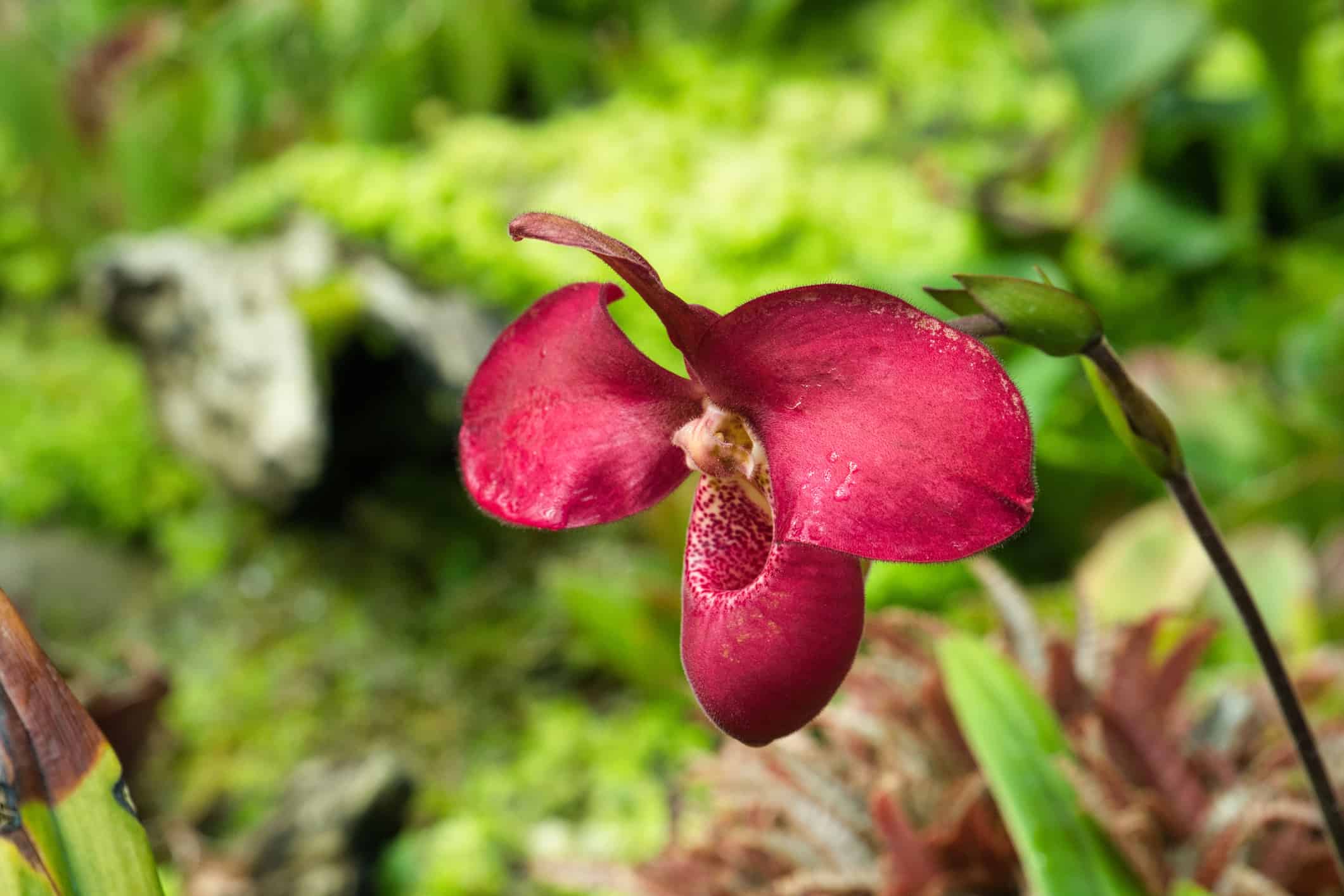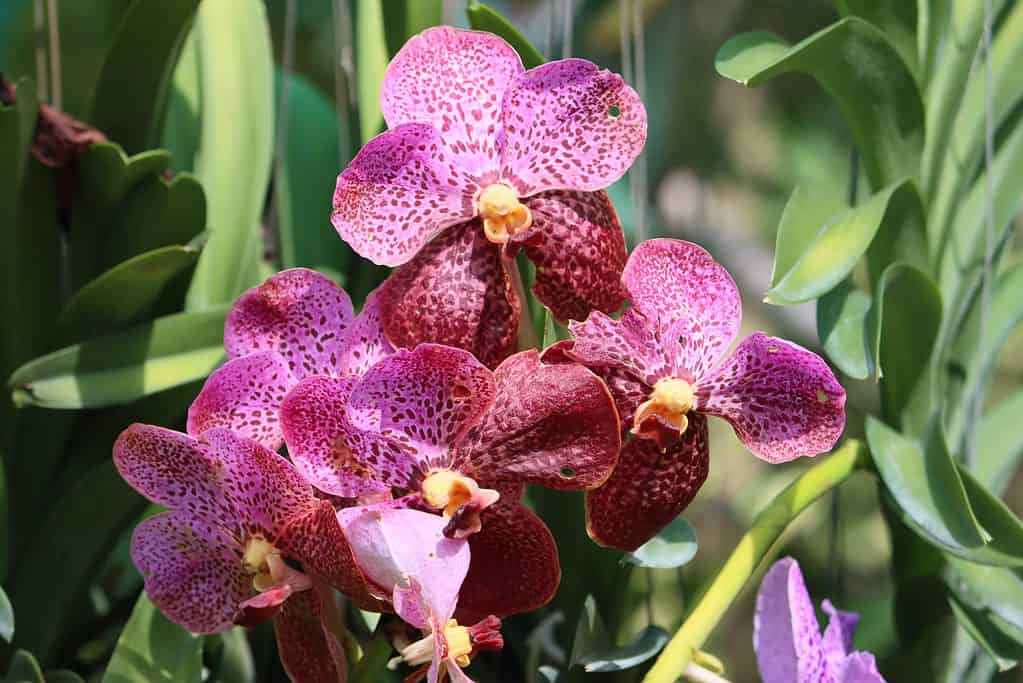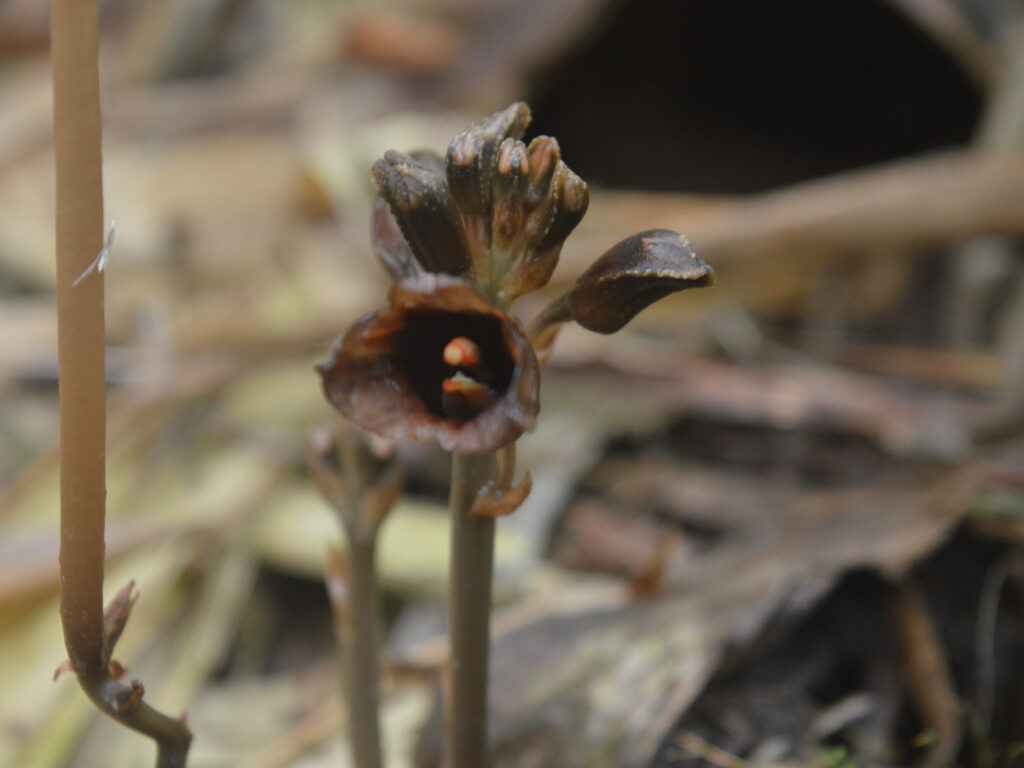To successfully grow orchids, knowing the varying sunlight requirements a genus or species of orchid needs to thrive is crucial. There’s no one-size-fits-all answer to the question of orchid sunlight requirement. Understanding the unique growing needs of each species you grow is the best bet for healthy, happy plants. Just as it’s important to ensure you’re growing your orchids in the correct growing substrate, it’s crucial to expose them to the right amount of light. Some orchids thrive in low-light conditions. Others appreciate full sun exposure in the morning, followed by bright, indirect sunlight. And finally, some species have evolved to require no sunlight at all.
In this guide, we’ll discuss the botanical classification and evolution of orchids. We will also explore the various sunlight requirements of a few popular orchid genera. We’ll also discuss the one genus of orchids that don’t require sunlight or photosynthesis to survive.
So, without further ado, let’s get to it!
Orchids: Botanical Classification and a Brief Evolutionary History
Currently containing 880 genera and almost 30,000 species, the Orchidaceae family is Earth’s most diverse flowering plant family. These gorgeous, unique plants have evolved for over 100 million years to inhabit various habitats, from lowland tropical forests and tropical montane jungles to temperate mountainous and coastal habitats. Starting as soil-dwelling plants, orchids have evolved to now primarily (80% of all species) grow on the bark of trees.
These tree-dwelling orchids are called epiphytes, and they receive their sunlight filtered through the leaves of the forest canopy. Sunlight requirements for epiphytes are usually moderate-bright, indirect sunlight. Because they don’t grow out in the open, epiphytic orchids don’t tend to tolerate full sun, although some species do well with gentle morning and evening full-sun exposure. Terrestrial species vary in their habitats, with some growing deep in shady forests and others growing in boggy areas and meadows that tend to receive more sunlight. While some terrestrial species may grow in more exposed areas, they are typically still protected from 100% full sun exposure by dense grasses and taller plants.

Tree-dwelling orchids are called epiphytes, and receive their sunlight filtered through the leaves of the forest canopy.
©Sergio J Lievano/Shutterstock.com
Categorizing Orchids Based on Sunlight Requirements
To help you get a solid foundational understanding of how much sunlight orchids need, we’ll organize some well-known genera into the following categories:
- low-light orchids
- intermediate-light orchids
- high-light orchids
These categories are defined by the brightness of light the orchid needs. Brightness is measured in foot candles. A foot candle is a light intensity measurement equivalent to one lumen per square foot. A lumen is defined as the total amount of visible light we can perceive from a light source. So, one foot-candle means that enough light is present to completely illuminate a one-foot square area from a distance one foot away.
We’ll also talk about the rare Gastrodia genus, consisting of mycoheterotrophic orchids that derive their nutrients strictly or partially from feeding on fungi rather than through photosynthesis or a combination of photosynthesis and a beneficial plant-fungi relationship.
How to Measure Foot-Candles
You can measure the brightness of a light source on your plant in a couple of different ways.
First, you can purchase a light meter. Light meters tend to measure the intensity of light that falls on a surface in lumens. 1 foot-candle equals 10.76 lumens, so you’ll be able to convert the measurement of the light meter into foot candles.
Your second option is to use a smartphone and download a lux or light meter app. Using a constant distance from a light source (in this case, the distance of the plant from a window), the app uses light sensors on the smartphone to determine light intensity.
Orchids Sunlight Requirements: Low-Light Orchids
Jewel orchids, phals (Phalaenopsis), and mottled-leaf paphs (Paphiopedilum) are two well-known groups of orchids that thrive in low-light conditions. The native environments of these orchids differ in temperature, terrestrial vs. arboreal, and by region of the world, but they all naturally inhabit areas with dense tree canopies. Thus, they excel at thriving in low-light conditions and tend to suffer quickly from leaf burn when exposed to full sun.
Jewel orchids are generally forest-dwelling terrestrials that hail from a number of genera, including Ludisia, Goodyera, Anoectochilus, Dossinia, and Macodes. They thrive in truly low-light conditions between the 500-1,500 foot-candles range and do well in north-facing windows or outdoor shade gardens. About 10-12 hours of low-moderate indirect sunlight is best for these plants.
Phals and mottled-leaf paphs tend to thrive at a light intensity between 1,000-2,000 foot candles and prefer north-facing windows or east-facing windows a few feet away. These genera of orchids can thrive in bright and indirect, and some species can do well in a couple of hours of morning full sun. But other than that, avoid full sun exposure, or you’ll risk leaf burn.

Jewel orchids naturally inhabit areas with dense tree canopies and thrive in low-light conditions.
©Thanes Pruttivanichakul/Shutterstock.com
Orchid Sunlight Requirements: Intermediate-Light Orchids
Common genera of orchids that fall in the intermediate-light category include Oncidium, Phragmipedium, and Epidendrum. At an intermediate-light intensity, aim to provide between 2,000-4,000 foot-candles. This usually looks like providing 12-16 hours of bright, indirect sunlight with morning full sun exposure.
Oncidium and Phragmipedium orchids do best in lighting between 2,000-3,000 foot-candles, and epidendrums thrive between 2,500-3,500 foot-candles. All of these orchids are great candidates for growing in east-facing windows. Be aware of leaves turning dark green, as this indicates you are not providing enough light. Conversely, reddening leaf tips indicate too much light exposure.

Orchids within the
Phragmipediumgenus do well with intermediate light.
©iStock.com/Wirestock
Orchid Sunlight Requirements: High-Light Orchids
While most orchids prefer only indirect sunlight, some species do thrive when grown in high-intensity light conditions. Orchids in the Vanda and Cattleya genera have much higher sunlight requirements than many of their relatives. Still, you don’t want to expose these plants to full sun for more than a few hours, or they, too, will develop sunburn. Instead, cattleyas and vandas are great candidates for a full morning and evening sun, but certainly not mid-day sunlight.
Aim for providing between 4,000-5,000 foot-candles for these light-loving orchids. If your climate is often overcast, you may need to grow these plants in south-facing windows. Otherwise, east-facing windows are a great option, especially if you combine them with allowing gentle full-sun exposure in the morning or evening.
When experimenting with where to play your high-light requirement orchids, be sure to check for leaf burn and reddening of the leaf tips for signs of too intense sun exposure. In these cases, you may be able to keep the plant in the same window but moved a couple of feet away to decrease the intensity of the light exposure. Conversely, if the leaves begin darkening, you can move the plant a foot or two toward the window to increase exposure.

Orchids in the
Vandaand
Cattleyagenera are great candidates for full morning and evening sun but not mid-day sunlight.
©Kolinchev Andrii/Shutterstock.com
Orchids in the Gastrodia Genus
Out of the 880 genera of orchids currently recognized, one genus stands out, containing orchids that don’t require photosynthesis to survive. These orchids belong to the Gastrodia genus. Rather than converting sunlight into sugar and engaging in a beneficial plant-fungi nutrient exchange (mycorrhizal), they derive their nutrients solely or partially from feeding off a fungal host.
This unique genus of orchids, known as mycoheterotrophs, engages in a parasitic relationship in which they take the nutrients obtained from fungi that engage in mycorrhizal partnerships with another plant host. Scientists call these little orchid nutrient burglars “mycorrhizal cheaters” because they benefit from a different plant-fungi mycorrhizal relationship while providing no nutrients.
The Gastrodia genus contains over 100 currently recognized terrestrial species native to parts of Australia, New Zealand, parts of the Pacific Islands, Taiwan, and Japan. You can quickly identify flowering Gastrodia orchids as they lack leaves, and their stems and flowers lack chlorophyll. They have an almost translucent appearance, typically displaying pale grey-brown coloration. The complex mechanism of how this unique genus of orchids survives is still being studied. While they don’t display vibrant colors like their photosynthesizing relatives. In contrast, they display quite an eerie, vampiric beauty with their delicate, pale blooms.

Orchids belonging to the
Gastrodiagenus derive their nutrients solely or partially from feeding off a fungal host.
©Rr. Fadila, CC BY-SA 4.0 via Wikimedia Commons – Original / License
The photo featured at the top of this post is © Edgloris Marys/Shutterstock.com
Thank you for reading! Have some feedback for us? Contact the AZ Animals editorial team.







